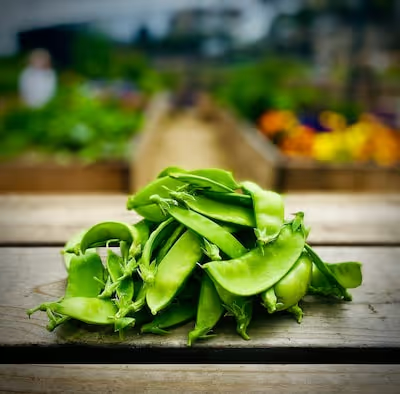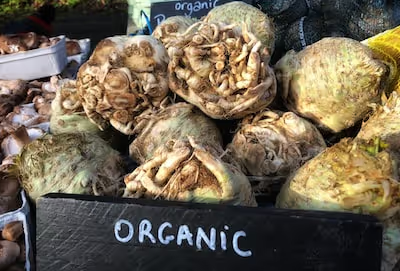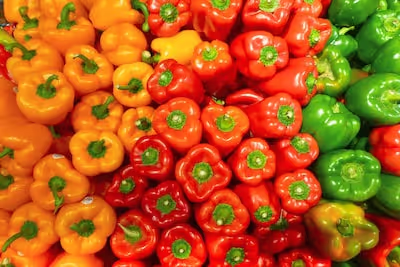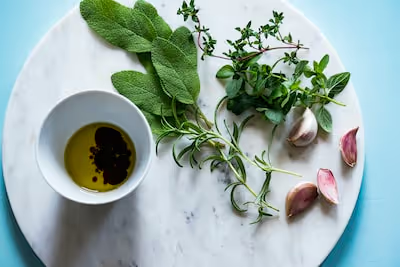Growing Strawberry Plants for Luscious Homegrown Berries
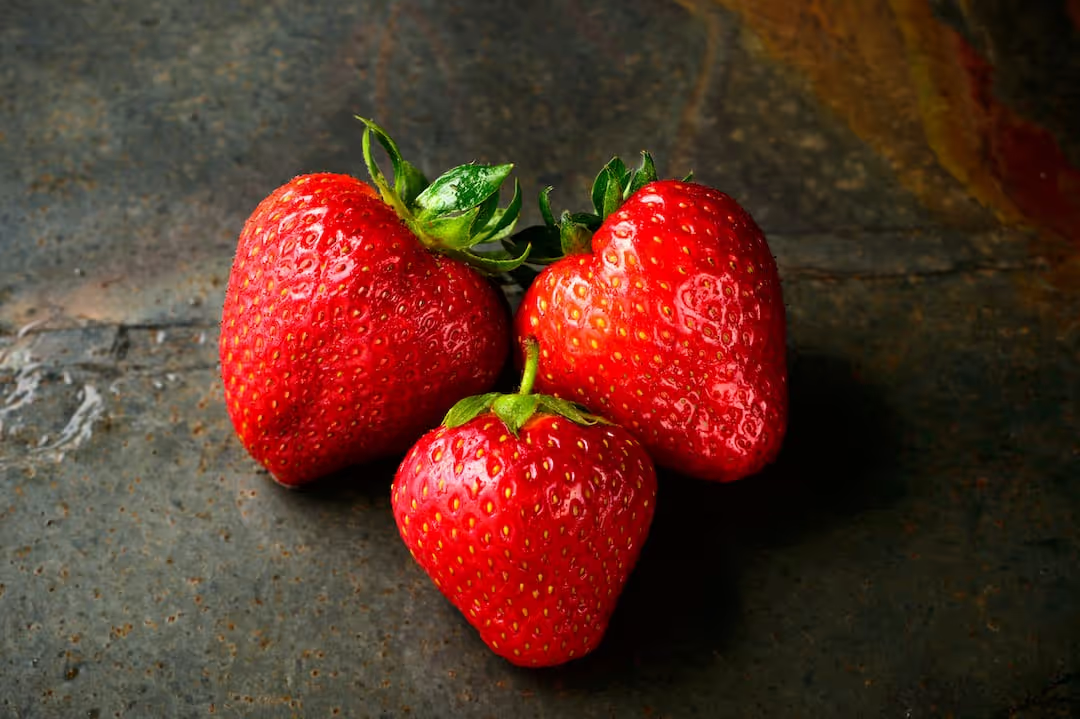
Growing Strawberry
Growing strawberry plants rewards attentive gardeners with flavorful berries, whether planting them directly into fertile soil or pots with ample drainage. Begin growing strawberry varieties suited to your climate, choose a sunlit corner, enrich it with organic compost, and water consistently to encourage lush production. Understanding pruning techniques and picking ripe fruit at its aromatic peak will give you luscious homegrown berries worth savoring—read on to master simple methods for growing strawberry abundance.
Cheatsheet: Successful Strawberry Planting & Harvest
🍓 Varieties to Consider
- June-bearing: 1 big crop in late spring.
- Everbearing: 2-3 crops summer to fall.
- Day-neutral: Continuous fruiting in 60°F–80°F (15°C–27°C).
🌱 Planting Location & Soil
- Pick full sun (6+ hrs daily).
- Soil: Loamy, well-draining, pH 5.5–6.5.
- Enrich with compost or aged manure.
🕒 Planting Steps
- Plant after last frost (soil >50°F / 10°C).
- Space 12–18 in. (30–45 cm) apart, rows 36 in. (90 cm).
- Set crown at soil level; roots spread out.
- Water well after planting.
💧 Water & Mulch
- 1–1.5 in. (2.5–4 cm) water/week, keep soil moist not soggy.
- Mulch with straw or pine needles to retain moisture, deter weeds, protect fruit.
🍽️ Nutrition & Health
- Rich in vitamin C, fiber, antioxidants.
- Harvest at peak ripeness for best flavor & nutrition.
- Homegrown: no pesticides, zero food miles.
🦠 Pest & Disease Prevention
- Rotate beds yearly.
- Protect with bird netting.
- Remove old leaves & runners after harvesting.
🛠️ Tools and Products You'll Need
- Hand trowel
- Watering can or drip system
- Straw or pine needle mulch
- Garden scissors
- Netting (optional)
- Compost or aged manure
- Strawberry plants or crowns
⏳ Quick Facts
- 1 plant yields up to 2 lbs (1 kg) berries/season.
- Peak harvest: 3–4 years; replace after 4–5 years.
- Strawberries rank top 5 for antioxidant content.
-
Growing Strawberry Plants for Luscious Homegrown Berries
I still remember the first June I filled a mixing bowl from a 4 by 8 foot bed and ate half of it before I reached the kitchen. The right setup turns a humble patch into a steady drumbeat of fruit.
Growing Strawberry rewards attention to detail, but the work feels like cheating once the fruit starts. Set the stage, then let the plants do their thing.
Choose the right type first
June-bearing produce one heavy crop in late spring or early summer and set flower buds the previous fall under short days. Day-neutral fruit in waves from late spring to frost whenever temperatures stay between about 35 to 85 F, 2 to 29 C.
Everbearing give two to three flushes, early summer and late summer. I use day-neutral for containers, June-bearing for a big one-time haul for jam.
“June-bearing strawberries produce one large crop per year, while day-neutrals fruit throughout the growing season.” Cornell Cooperative Extension
Varieties that actually deliver
- Day-neutral for rich flavor and steady yield: Albion, Seascape, San Andreas, Monterey, Mara des Bois.
- June-bearing for big bowls: Chandler, Jewel, Honeoye, Allstar, Camino Real.
- Containers and hanging baskets: Albion, Seascape, Mara des Bois, Ozark Beauty.
- Cold winters: Honeoye and Jewel handled my Zone 4 nights without drama. Heat-prone sites: Albion and San Andreas kept fruiting through hot spells.
- Disease resistance: Allstar shows solid red stele resistance, which keeps roots from rotting in wet springs.
Buy certified disease-free starts from reputable nurseries. Bare-root crowns are cost effective for big beds, while plugs and potted plants jump faster in short seasons.
Soil, site, and prep
Full sun, at least 8 hours, gives sugar and color. Aim for pH 5.5 to 6.5, which most Extension services recommend.
Build raised beds 8 to 10 inches deep, 20 to 25 cm, if drainage is sluggish. Mix in 2 to 3 inches, 5 to 7.5 cm, of finished compost and a balanced organic fertilizer at planting.
“Strawberries prefer well-drained soils with a pH of 5.5 to 6.5.” University of Minnesota Extension
Planting windows and spacing
Plant bare-root crowns in early spring as soon as soil can be worked, or in fall in mild climates. Keep the crown at soil level, never buried, or you will lose plants.
Space 12 to 18 inches, 30 to 45 cm, in the row with 3 to 4 feet, 0.9 to 1.2 m, between rows for June-bearing matted rows. For day-neutral hill systems, plant 12 inches apart in double rows on beds 18 to 24 inches wide.
Watering that makes berries pop
Strawberries need even moisture, around 1 to 1.5 inches of water a week, 25 to 38 mm. Drip lines and a timer keep fruit clean and leaves dry.
Mulch with clean straw at 2 to 3 inches, 5 to 7.5 cm, to hold moisture and block weeds. Avoid overwatering, which invites Botrytis, the gray fuzz that wrecks ripe berries.
Nutrient plan without guesswork
Soil test first, then feed modestly. For garden beds, I apply about 1 pound of actual nitrogen per 1000 square feet per season, 49 g per 10 m², split into two or three light feeds.
Day-neutral work harder and appreciate spoon-feeding with fish emulsion or a balanced soluble every 2 to 3 weeks from first bloom. Containers need regular liquid feed because media leaches fast.
Training systems that fit your goal
Matted row for June-bearing: let runners root to form a 12 to 18 inch, 30 to 45 cm, wide ribbon, then clip extras. This gives a heavy early summer crop.
Hill system for day-neutral and everbearing: remove most runners to push energy into fruiting. I allow one runner per plant in midsummer to replace tired plants.
Frost, heat, and weather tricks
Open blossoms can be damaged around 30 F, minus 1 C, while tight buds handle colder. I keep 0.9 to 1.2 oz frost cloth handy and cover before dusk.
Row covers also speed spring by a week or two. Vent on warm days to avoid flower abortion above 85 F, 29 C.
“Open strawberry blossoms are injured at about 30 F, while tight buds tolerate much colder temperatures.” North Carolina State Extension
Pests and diseases without panic
Botrytis gray mold thrives on wet petals and dense canopies. Space well, mulch, prune leaves after harvest on June-bearers, and pick promptly.
Powdery mildew curls leaves in humid spells. Good airflow and resistant varieties help more than sprays.
Verticillium wilt ruins patches planted after tomatoes, potatoes, or eggplant. Rotate 3 to 4 years away from those families and use resistant cultivars.
Slugs chew rims at night. Iron phosphate baits, sharp mulch, and beer traps work without torching the ecosystem.
Tarnished plant bug causes “cat-faced” berries. Keep weeds down and shake blossoms in the cool morning to scout nymphs.
Birds will test your patience. Netting with 0.5 inch mesh, 1.3 cm, solves most losses.
My go-to calendar
- Late winter: soil test, order certified plants, prep drip parts and frost cloth.
- Early spring: plant, set drip, mulch after soil warms, remove first flush of flowers on new day-neutral to build roots.
- Late spring to summer: weekly picks, steady water, light feedings, runner management.
- Post-harvest on June-bearers: renovate by shearing leaves above crowns, narrow rows, fertilize, and irrigate back to vigor.
- Late fall: straw mulch crowns after ground cools to 25 to 28 F, minus 4 to minus 2 C, for winter protection.
Harvest and handling like a pro
Pick fully red fruit in the cool morning and keep the cap on. Chill fast at 32 to 36 F, 0 to 2 C, and avoid washing until use.
My sweetest bowls came after three straight blue-sky days. A pocket refractometer showed 10 to 12 Brix on Albion, which tracks with what breeders target for dessert fruit.
“Expect about 0.5 to 1 pound of fruit per plant in home gardens, more with day-neutral under good management.” University Extension sources such as Minnesota and UC ANR
Containers, balconies, and grow bags
Use 10 to 15 gallon, 38 to 57 L, grow bags for 3 to 5 plants. Fill with a peat or coir based mix with perlite for drainage.
Day-neutral shine in containers under consistent feeding and water. Hang baskets where you can water daily in summer heat.
Indoors and lights
Day-neutral can fruit under LED panels at 12 to 14 hours light and 65 to 75 F, 18 to 24 C. Hand-shake flowers or use a soft brush to move pollen.
Keep humidity around 50 to 60 percent to limit mildew. Choose compact cultivars like Albion or Seascape for tight spaces.
Buying guide and gear that earns its keep
- Bare-root crowns for budget beds, ship dormant and store in the fridge until planting.
- Plug plants for faster starts, ideal for late spring installs or containers.
- Drip kits with 0.5 gph emitters, 1.9 L h, and a simple timer save time and fruit quality.
- Frost cloth, 0.9 to 1.2 oz weight, and low hoops for late frosts and early push.
- Bird netting, soil test kit, and a pH meter to keep media in range.
Companions and rotations
Borage pulls pollinators and the flowers taste like cucumbers alongside berries. Avoid planting after tomatoes or potatoes to dodge Verticillium wilt.
Leafy greens tuck between rows in spring before the canopy closes. I like baby spinach in the paths for one quick cut.
Common mistakes I see over and over
- Planting crowns too deep, which rots them in a week of rain.
- Letting runners swamp day-neutral beds, which cuts yield.
- Overfeeding nitrogen that pumps leaves and invites mildew.
- Skipping renovation on June-bearers, then wondering why year two fizzles.
- Watering overhead during bloom, which feeds gray mold.
Yield math for planning
Figure 0.5 to 1 pound per plant for June-bearing and about 1 to 1.5 pounds for day-neutral with steady care. A 4 by 8 foot, 1.2 by 2.4 m, bed can carry 25 to 40 plants and fill a freezer.
For fresh eating, I plan 5 to 7 plants per person. For jam and freezing, double it.
Proof-backed notes and quotes
Day-neutral fruiting across seasons with moderate temperatures is well documented by UC Agriculture and Natural Resources. The RHS, Royal Horticultural Society, concurs on pH and drainage needs for reliable production.
“Day-neutral cultivars flower and fruit regardless of day length when temperatures are suitable.” UC ANR
Cornell and Minnesota Extension guides align on spacing, renovation, and netting to protect yield. Following those playbooks saved me money and berries in wet springs.
Frequently Asked Questions About Growing Strawberry Plants
What's the best time to plant strawberries?
Plant strawberries in early spring, once the soil wakes from winter slumber and becomes workable. Cooler temperatures entice roots to settle down and stretch deep, savoring that first warmth of the sun.
Do strawberries prefer sun or shade conditions?
Full sun is the strawberry's sweet muse. These bright berries thrive with at least six to eight hours of sunlight per day, soaking in rays to produce fruit that's unapologetically lush and bursting with flavor.
How should I prepare the soil for planting strawberry plants?
Create fertile ground by enriching your soil with ample amounts of organic matter—compost or aged manure works wonders. Strawberries love a well-drained, loamy bed where roots breathe deep and nutrients flow freely.
How much water do strawberry plants require?
Strawberry roots appreciate consistently moist soil—never waterlogged, never parched. Give your plants about 1 to 1.5 inches of water per week, allowing moisture to seep gently, nourishing without overwhelming.
What's the most effective way to protect strawberries from pests?
Employ natural defenses such as companion planting (think marigolds or garlic) to repel pests. Consider netting to guard against birds eager to partake in the strawberry bounty. Vigilance and balance are your allies here.
Do strawberry plants require pruning or pinching back?
Definitely. Remove runners to focus the plant's energy on producing fruit rather than expansion. After berries are harvested, trim away old foliage to invigorate growth and prevent the onset of disease.
What should I do with strawberry plants during winter?
Once frost threatens, tuck your strawberry plants under a cozy layer of straw mulch or pine needles. This protective blanket maintains consistent soil temperatures, shielding roots against harsh winter chills until spring returns.
Growing strawberry plants isn’t rocket science, but damn, it’s rewarding. With a little sun, decent soil, and some patience, you get sweet, homegrown berries that put supermarket fruit to shame. Keep runners in check, mulch well, and feed your plants—the basics matter. Rotate your patch every few years and you’ll dodge most pests and diseases. If you enjoy the hands-in-dirt satisfaction of growing strawberry plants, you might want to branch out—try growing blackcurrant for even more homegrown flavor. At the end of the day, there’s nothing like stepping outside, picking a sun-warmed berry, and tasting the effort. That’s what gardening’s all about.
Homesteader's Guide: Sustainable Strawberry Gardening
Boosting Berry Yield Naturally
- Interplant strawberries with onions, garlic, or chives to deter pests organically.
- Encourage pollinators by planting bee-friendly flowers like borage or thyme nearby; pollinated berries produce up to 30% higher yields.
- Mulch with straw or pine needles for moisture retention, weed control, and protection from fungal diseases—reducing watering needs by nearly 50%.
Health Boost: Nutrient-Rich Strawberry Leaves
Dry harvested strawberry leaves to create herbal teas; they contain vitamin C, flavonoids, and antioxidants that support immunity and digestion.
Home Composting for Soil Enrichment
- Enrich soil fertility by composting strawberry runners and pruned foliage.
- Foster beneficial microbes and earthworms by applying finished compost yearly; resulting soil improvements can increase berry productivity by 20-40%.
Long-Term Sustainability: Saving Seeds
Select heirloom or open-pollinated strawberry varieties for seed-saving; dried seeds stored properly remain viable for 3-5 years, ensuring ongoing berry harvest without repurchasing plants.
Find out which plants will thrive in your garden!
Answer a few fun questions and get custom plant recommendations perfect for your space. Let’s grow something amazing together!

start your season
